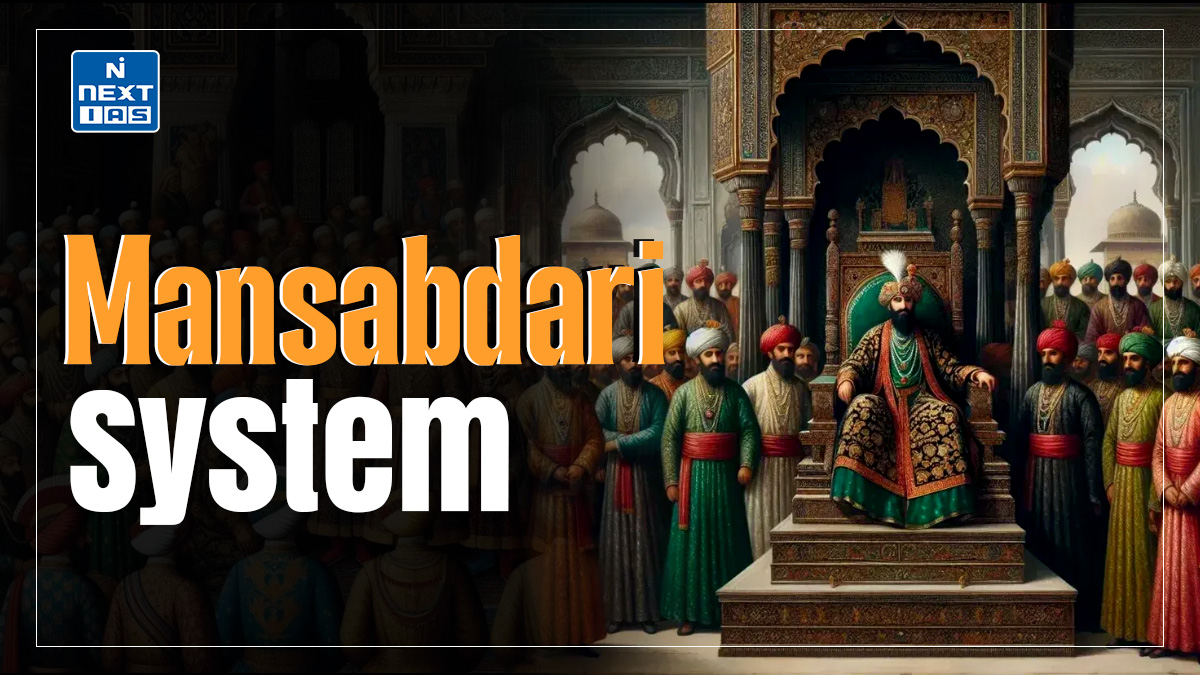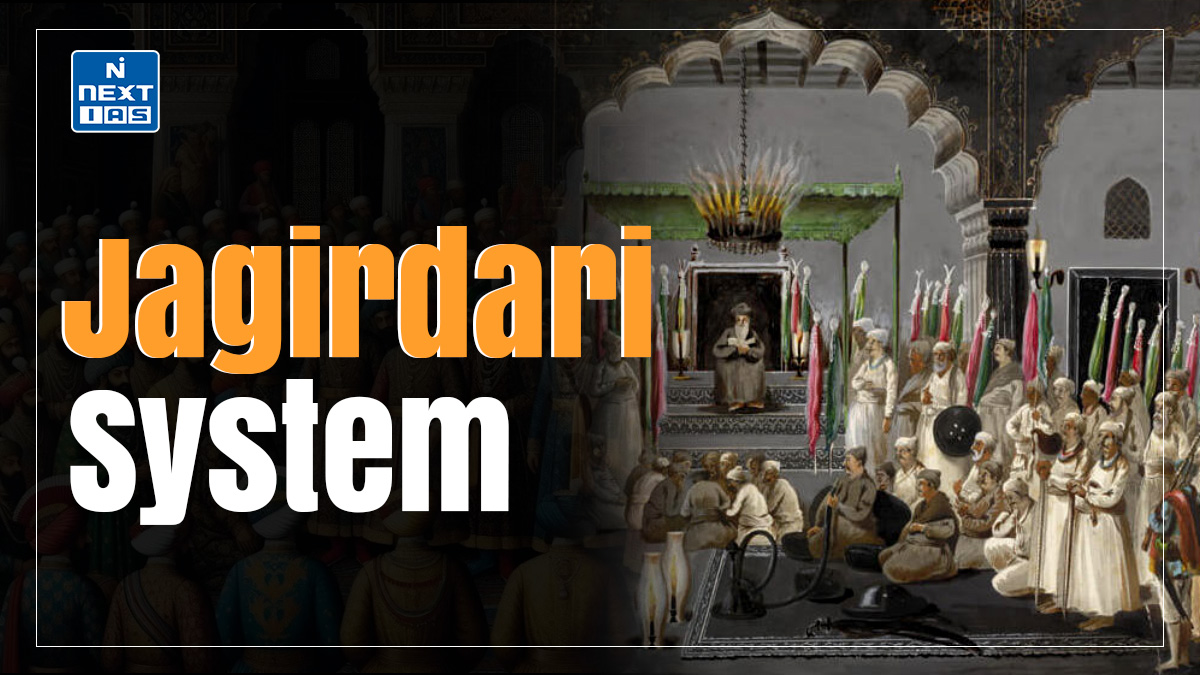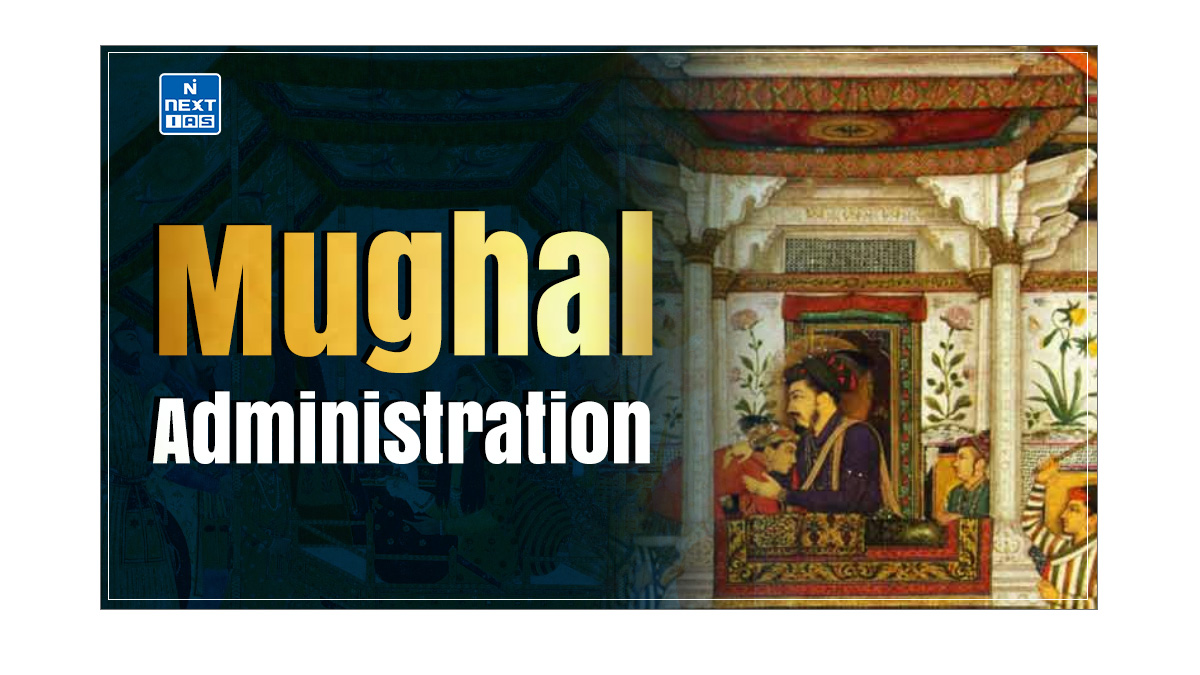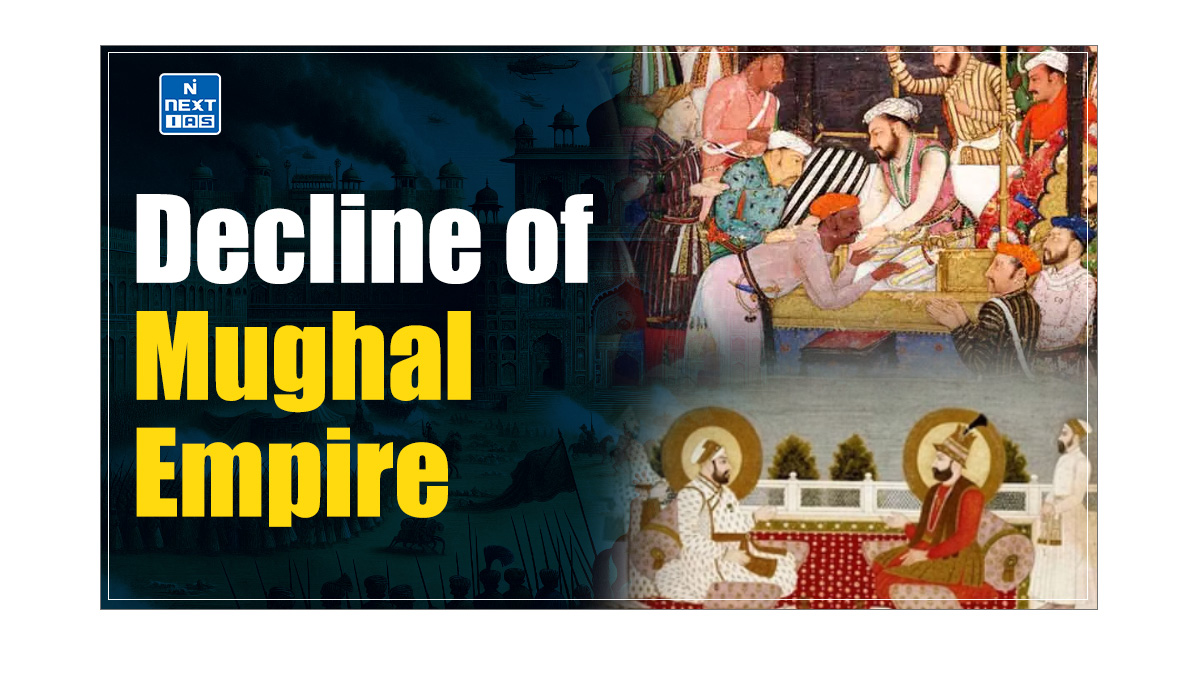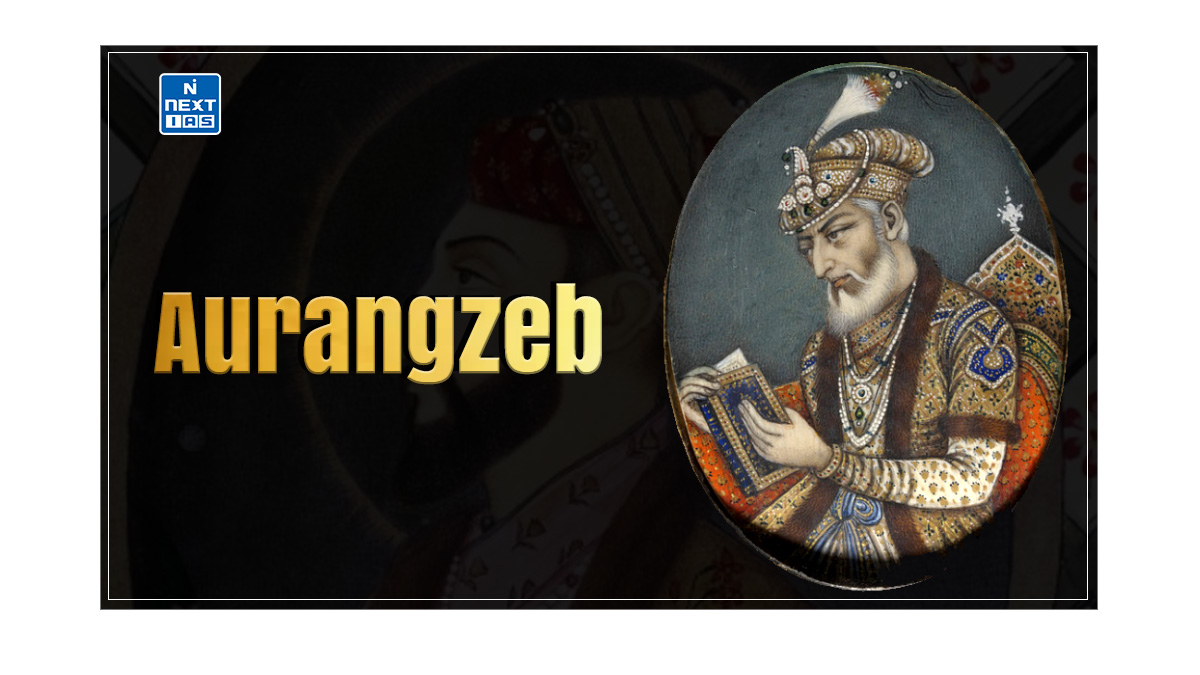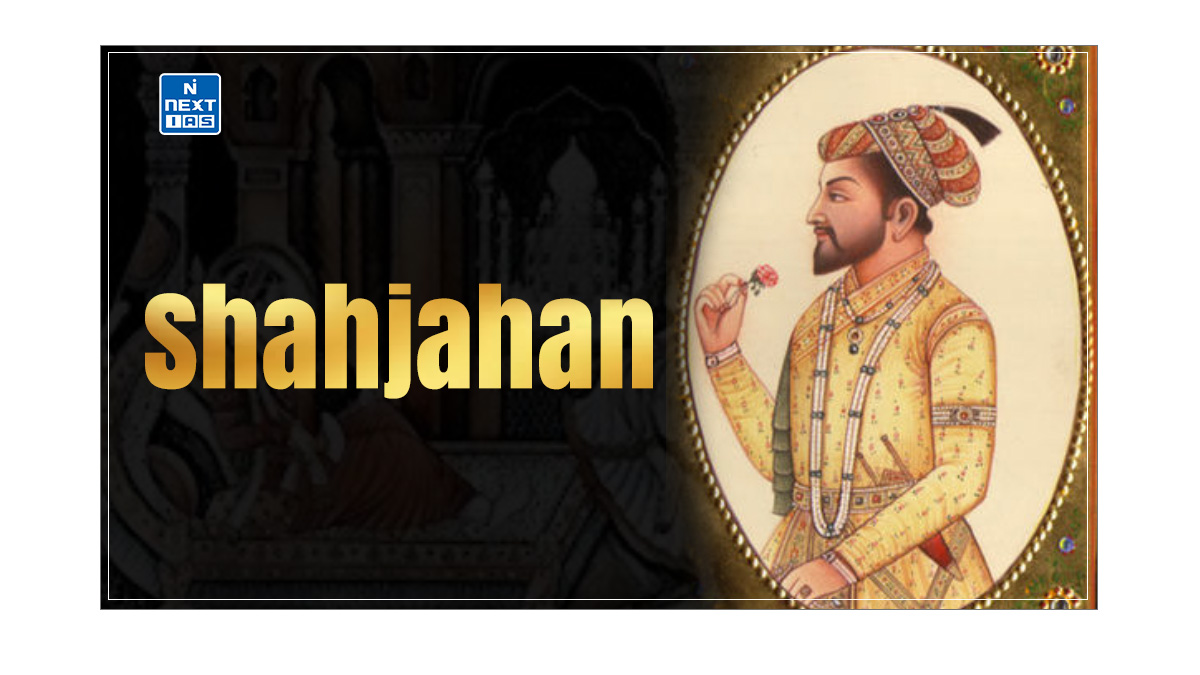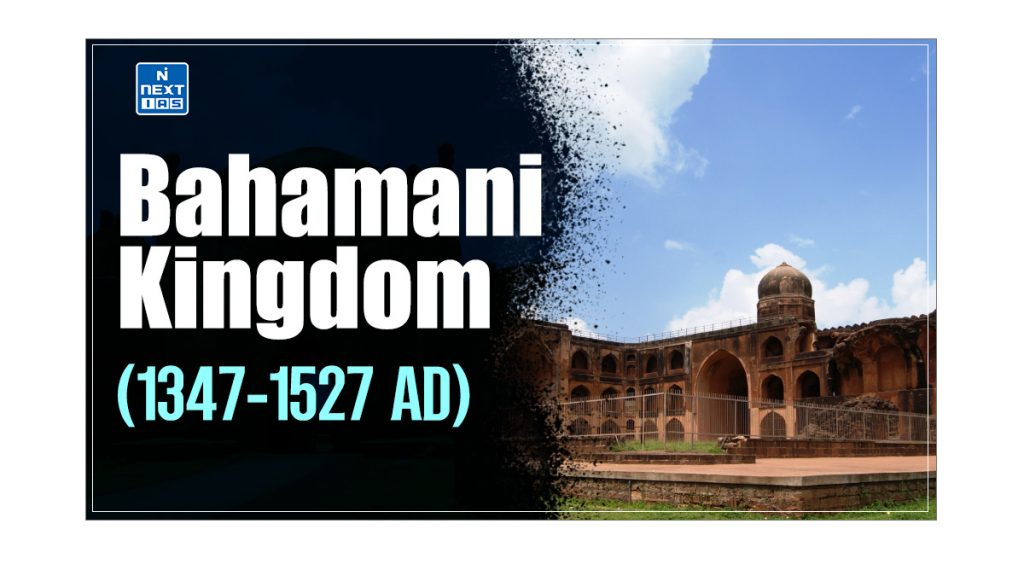
The Bahmani Kingdom, founded in 1347 AD by Alauddin Bahman Shah, emerged as a powerful force in southern India, blending Persian, Indian, and Deccan influences. This dynasty fostered a rich cultural and artistic environment marked by notable architectural, literature, and administration achievements. This article aims to study in detail the historical significance, cultural contributions, and architectural achievements of the Bahmani Kingdom.
About Bahamani Kingdom
- The Bahmani Kingdom was established in 1347 AD by Alauddin Bahman Shah, an Afghan adventurer.
- According to a legend, he had risen in service of a Brahmana named Gangu.
- Hence, he was known as Hasan Gangu, and as a tribute to his Brahamana patron, the dynasty he established became known as the Bahmani dynasty.
- Hasan Gangu was succeeded by his son Muhammad Shah I, who waged wars against the Hindu principalities of Vijayanagara and Warangal and defeated them in battles.
- However, the most remarkable ruler of the Bahmani kingdom was Firoz Shah Bahmani (1397-1422).
- He patronised art and sciences, especially religious and natural sciences.
- He was well-versed in Persian, Arabic, Turkish, Telugu, Kannada and Marathi.
- He encouraged the pursuit of astronomy and built an observatory near Daulatabad. He inducted Hindus into the administration on a large scale.
- Firoz Bahman expanded the empire by annexing Berar after defeating the Gond Raja Narsing Rai of Kherla.
- He won two consecutive battles against the Vijayanagara Kingdom but lost the third battle in 1420 AD. After that, his power waned, and he was forced to vacate the throne in favour of his brother, Ahmad Shah I.
- Ahmad Shah was known as Wali (the Saint) due to his association with the famous Sufi Gesu Daraz.
- To avenge the battle in which Firoz Bahaman lost as the ruler of Warangal sided with Vijayanagara, he attacked Warangal, defeated and killed the ruler, and annexed most of its territories.
- He shifted his capital from Gulbarga to Bidar to consolidate his rule over newly acquired territories.
Founder of Bahamani Kingdom
- The Bahamani Kingdom was founded by Ala-ud-Din Hasan Bahman Shah in 1347.
- Originally a servant in the court of the Delhi Sultanate, Hasan Bahman Shah declared independence from Sultan Muhammad bin Tughlaq and established the Bahamani Kingdom in South India with Gulbarga (present-day Kalaburagi, Karnataka) as its capital.
- This kingdom became a prominent power in the Deccan region, serving as a cultural and political counterforce to the neighbouring Vijayanagara Empire.
- Hasan Bahman Shah’s rule laid the foundations for a dynasty that encouraged the fusion of Persian and Deccan cultures, significantly influencing the region’s art, architecture, and administration.
Mahmud Gawan (1463-1482)
- Mahmud Gawan was the Prime Minister of Muhammad Shah III, who was crowned Sultan at the age of 9. Hence, the entire burden of the administration fell on his Prime Minister.
- Gawan was an Iranian trader who rose to the service of the Bahmani Sultan and was given the title of Malik-ul-Tujjar. He dominated the affairs of the Bahmani Kingdom for almost twenty years.
- He extended the Bahmani Kingdom by annexing territories in the east and defeating the ruler of Orissa.
- He also invaded Vijayanagara territories up to Kanchi and also captured territories of Dabhol and Goa.
- The control over Goa and Dabhol helped further expand the overseas trade with Iran and Iraq.
- In an attempt to settle the northern frontier of the Bahmani Kingdom, Mahmud Gawan fought Mahmud Khalji of Malwa over Berar in a series of battles.
- Gawan prevailed over him due to active help from the Gujarat kingdom.

Madrassa of Mahmud Gawan
- He was an able administrator who introduced many revenue reforms and opened several Madarsas for Islamic learning in Bidar.
- However, the Bahmani court consisted of many nobles jealous of Gawan.
- They conspired against him and succeeded in convincing the Sultan of Gawan’s disloyalty.
- He was executed in 1482 AD, and with his death, the power of the Bahmani Kingdom waned. Weak Sultans succeeded Muhammad Shah.
- During this period, the provincial governors declared their independence. By 1526, the Bahmani kingdom had disintegrated into five independent sultanates.
- They were Ahmednagar, Bijapur, Berar, Golkonda, and Bidar, all known as Deccan Sultanates.
- Five independent Muhammadan kingdoms in the Deccan were formed out of its fragments. These were:
- Bijapur: The state of Bijapur was founded by Yusuf Adil Shah in 1489 A.D. Ibrahim (1534-58) was the first Bijapur ruler to replace Persian with Hindvi (Dakhini Urdu) as the official language.
- Ibrahim II (1580-1627) was affectionately called Jagadguru by his subjects. In 1686, Aurangzeb annexed Bijapur.
- Ahmednagar: In 1490, Ahmad Bahri founded the Nizam Shahi dynasty, which Shahjahan conquered in 1636 AD.
- Golconda: Ali Qutub Shah founded the Qutub Shahi dynasty in 1518. Muhammad Quli founded the city of Hyderabad. Aurangzeb annexed Golcunda in 1687.
- Berar: Fatullah Imad-ul-Mulk founded the Imad Shahi dynasty at Berar in 1490 AD. This state had the shortest life span, as it was annexed by Nizam Shahis in 1572 AD.
- Bidar: Ali Barid founded the Barid Shahi dynasty in 1518. The Adil Shahis of Bijapur later annexed Bidar. Bidar fort taken by Aurangzeb in 1657.
- Bijapur: The state of Bijapur was founded by Yusuf Adil Shah in 1489 A.D. Ibrahim (1534-58) was the first Bijapur ruler to replace Persian with Hindvi (Dakhini Urdu) as the official language.
- These small kingdoms engaged in wars with each other, which enabled the Mughals to incorporate them into the Mughal Empire.
- However, the kingdoms of Golconda, Bijapur, and Ahmednagar continued to play a prominent part in the politics of the Deccan region until they were subsumed in the Mughal Empire in the seventeenth century.
Polity and Administration of Bahamani Kingdom
- The Bahmani kingdom was divided into eight provinces or tarafs; a tarafdar governed each.
- The salaries of the nobles were fixed and paid either in cash or by assigning a jagir.
- The nobles of the Empire were divided into Deccanis (oldcomers) and Afaqis (newcomers).
- This resulted in strife among the nobility.
- In every province, a tract of land (khalifa) was set aside for the Sultan’s expenses.
Art and Architecture of Bahamani Kingdom
- The art and architecture of the Bahamani Kingdom, which flourished in southern India from the 14th to the 16th centuries, reflect a unique synthesis of Persian, Indian, and Deccan styles.
- This period saw the construction of impressive structures characterised by intricate ornamentation, bold geometric patterns, and vibrant tile work.
- Notable architectural achievements include the grand mosques of Gulbarga and Bidar, which feature distinct arches, domes, and minarets that exemplify Indo-Islamic architectural principles.
- The Bahamani rulers commissioned numerous palaces and forts, such as the impressive Bahmani Forts at Bidar, showcasing defensive architecture and aesthetic beauty.

Gol Gumbaz
- The Bahmani rulers were patrons of art, architecture, language, literature, and music. Their patronage gave the Urdu language impetus.
- Many scholars adorned the court of Bahaman Sultans. In the field of architecture, Gol Gumbaz at Bijapur is famous.
- Gol Gumbaz has a 53.4-metre-high dome, the largest in Asia.
- It is the mausoleum of Muhammad Adil Shah, the seventh Sultan of the Adil Shahi Dynasty of Bijapur (1489-1686).
- The Golconda rulers built the Charminar at Hyderabad.
- The Madarasa built by Mahmud Gawan at Bidar was three-storeyed and could house a thousand students. Many students from Iran and Iraq also studied there.
- Other famous monuments are the Jama Masjid at Gulbarga, the Golconda fort and the Ahmad Shah’s tomb at Bidar.

Deccan Policy and Relation with South Indian States
- The Bahmani kingdom provided an era of stability in the South.
- The Bahaman Sultans provided a sound administration system and were great patrons of art and culture.
- Monuments built by them reflect the magnificence of architecture developed during the period.
- However, the continuous battles with neighbouring states, especially Vijayanagara, infighting among the nobility and weak successors led to the downfall of the Bahmani kingdom.
Conclusion
The Bahmani Kingdom left a lasting legacy through its architectural wonders and cultural advancements. Despite its decline and division into smaller sultanates, its contributions to art, governance, and religious tolerance significantly shaped the Deccan’s historical landscape. The kingdom’s influence laid the groundwork for future dynasties, ensuring its cultural heritage endured long after its fragmentation.
Frequently Asked Questions (FAQs)
Who was the founder of the Bahmani Kingdom?
The founder of the Bahmani Kingdom was Ala-ud-Din Hasan Bahman Shah, who established the kingdom in 1347 after breaking away from the Delhi Sultanate.
How did the Kingdoms of Vijayanagar and Bahmani emerge?
The Vijayanagar Empire emerged in 1336, founded by Harihara I and Bukka Raya I, to resist Muslim invasions and protect Hindu culture in South India. The Bahmani Kingdom emerged in 1347, founded by Ala-ud-Din Hasan Bahman Shah, as a separate Muslim kingdom following a revolt against the Delhi Sultanate’s control over the Deccan region.
